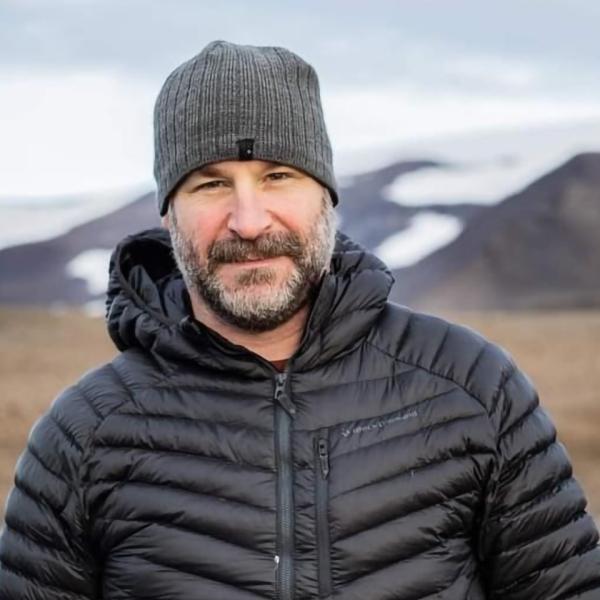Christian Messier sees an analogy between his research and the Phil Alden Robinson movie Field of Dreams. This is but one of many insights he offers in this interview.
CFI: Tell us a bit about your professional background in forest management
Messier: I study trees and forests. But whether I’m looking at a temperate, boreal or tropical forest, one question has always fascinated me: What contributes to forest regeneration?
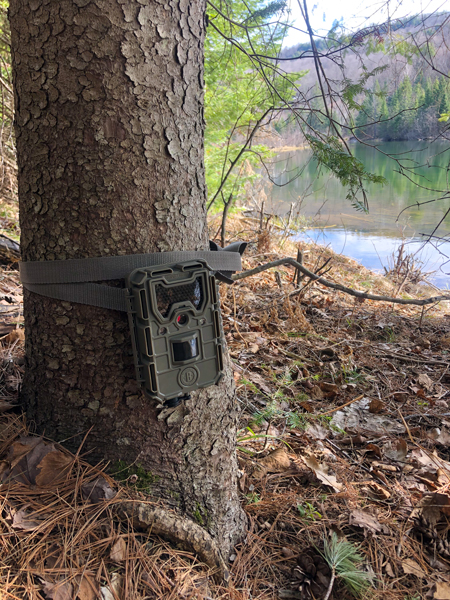
Surveillance camera to monitor how the tree changes with the seasons CREDIT: ISFORT |
This is why I have devoted my time to empirical research on optimal forest management. My specific area of interest is the functional ecology of trees, which is the study of both their functioning, from when they are seeds to when they have fully matured, and the ways they interact with their environment.
My approach involves two main objectives. The first is to increase diversity in forests and, as a result, obtain better results in areas such as natural resources conservation, wood production, wastewater management, flood management (minimizing negative impacts), noise pollution reduction and even carbon fixation. The second is to improve forests’ resilience to climate change, insect invasions and exotic diseases.
CFI: What kind of equipment is needed to study tree ecology in nature?
Messier: It’s important to understand that in forestry work, we are operating on an immense scale, both spatially and temporally. This is why, about ten years ago, we set up miniature models of forest ecosystems. These experimental plantations are part of the International Diversity Experiment Network with Trees (IDENT). In Canada, we have 45,000 trees spread out across 1,000 plots. Each plot measures about 15 square metres, contains about 60 trees and is either a monoculture or mixed-species plantation. We have even introduced exotic species, primarily from Europe.
As you have probably guessed, this type of work requires state-of-the-art equipment. This includes terrestrial LiDAR systems, drones, cameras, meteorological equipment and instruments for measuring photosynthesis and the amount of water and nutrients present in the soil. We also have growth chambers and microscopes, as well as freezers to store our samples at temperatures as low as -70°C. We also borrow equipment for measuring DNA in the soil from our partners.
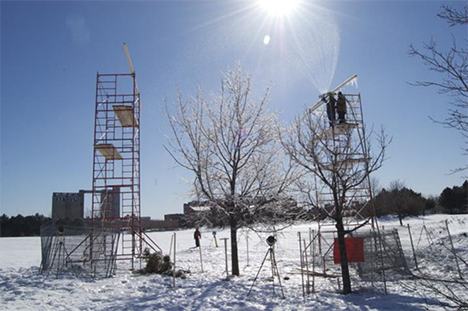
Devices for watering a tree and creating artificial ice CREDIT: ISFORT |
CFI: What do you need to measure?
Messier: We measure just about anything you could imagine, on every part of the tree. We look at the effects of predation by birds, bacteria and insects. We examine whether there is sufficient diversity to reduce heat islands or adequately nourish adjacent forests. We also study the impacts of snow buildup and melting.
For example, by using a terrestrial LiDAR system that sends out millions of laser beams, we can locate and map the objects in a given space. This tool has allowed us to observe, with great precision, how a tree orients itself in a space across the various stages of its development.
We were even able to spray trees in the middle of February to simulate an ice storm and track everything that was happening in real time. We were able to see where the ice formed, which branches were impacted or breaking and how the crown collapsed. We generated millions of data points. Being able to understand what happens when trees encounter this kind of weather is invaluable.
CFI: Did the results you obtained correspond to the objectives that you had set for yourself?
Messier: Our success has exceeded my expectations by a lot! Because of the results we obtained across the IDENT, we can now propose concrete forest management solutions.
It’s like the scene in the movie Field of Dreams in which Kevin Costner’s character hears a voice say, “If you build it, [they] will come.”
The interest for our work both nationally and internationally has allowed us to establish plantations in Ontario, the United States, Germany, Italy and Ethiopia.
CFI: How do you convince people to diversify forests on a large scale?
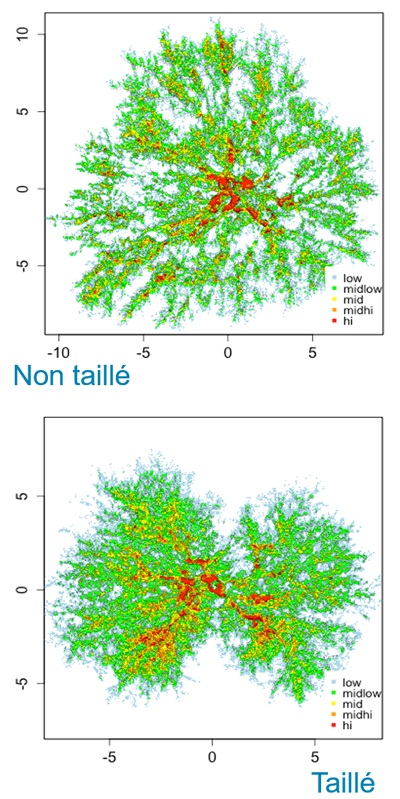
LiDAR images of a tree before (left) and after (right) an ice storm CREDIT: ISFORT |
Messier: It would be unrealistic to think that we could increase the diversity of every forest in Quebec or Canada, but we can intervene in very specific areas.
We are in the process of figuring out how to intervene in regions as large as 400,000 hectares. The idea is to “vaccinate” our forests against the catastrophic threats and disturbances that will occur in the future.
There is a certain amount of pushback because forestry has always been about planting only the few tree species with high commercial value. What I am proposing is a true paradigm shift, and we need to be patient in order to see it through. Monoculture planting is like investing all your money in a company in the hope that in 30 or 50 years, you will be rich. I am more cautious and invest my money in different areas. This same strategy should apply to forestry. In fact, there is a term for this in ecology: the “portfolio effect.” I always say that the commercial value of a pine tree or walnut tree may not be the same in 60 or 100 years when it’s time to harvest it.
CFI: Do you think your approach can really solve the problems we are facing, or are you pessimistic about the future of forests?
Messier: Nature is always going to reassert itself and eventually establish a new balance. Nature is well made. That said, it is undeniable that for 200 years we have been exploiting the forest by diminishing its natural biodiversity.
But let’s say you were to ask me that question differently: Will the forests recover in a way that provides us with all of the ecosystem services that we need? I would probably give a very different response.
More and more tree species in our forests are dying. These losses weaken the resilience of forests and increasingly compromise their ability to provide the same quality and quantity of ecosystem services, even if we’re just talking about carbon fixation, water filtration and wood production.
So am I a pessimist? Yes, but of the active variety, in the sense that I say that we can and must take action. I am working to rebuild rich, functional forests.
CFI: What would you like to pass on to Canadians about protecting forests?
Messier: I humbly recognize that, even if we do the best ecological science out there, we need to make a connection with the social sciences. Like many others, I am beginning to incorporate the arts into my scientific work. One of the things I have been doing is collaborating with my colleague Jérôme Dupras, a professor in the department of natural sciences at Université du Québec en Outaouais (UQO) and bass player for the Cowboys Fringants. I gave him information on ecology and forest management, and he led creative workshops in Quebec schools. In 2015, this project culminated in an album called Nos forêts chantées, which raised awareness about environmental issues among the student composers. If I had been left to provide workshops at these schools on my own, the students probably wouldn’t have remembered much of anything.

Passing on knowledge is important to me. I’m also trying to develop a project with several other colleagues. We are trying to understand which factors promote a sense of wellbeing when we take a walk in a city park or a forest. We would like to be able to use virtual reality to simulate several types of forest and even control the sounds and smells. For several years now, studies have shown that being around trees and in forests improves our physical and psychological health. In Japan, they even have a word for this: shinrin-yoku, or “forest bathing.”
Finally, I would like to share a greater feeling of wonder toward trees and forests that I have. Imagine you had to choose one spot to stand for the next 100 years. This would require an extraordinary ability to adapt! You would need to manage your surroundings successfully to survive the seasons, animals and insects, not to mention extreme weather events. For animals, it’s simple: they flee, burrow, hide or fly south. Trees, on the other hand, have to stay put across every season, for 100 or 1,000 years!
Now it’s my turn to ask you a question: Do you understand the true value of a tree today?
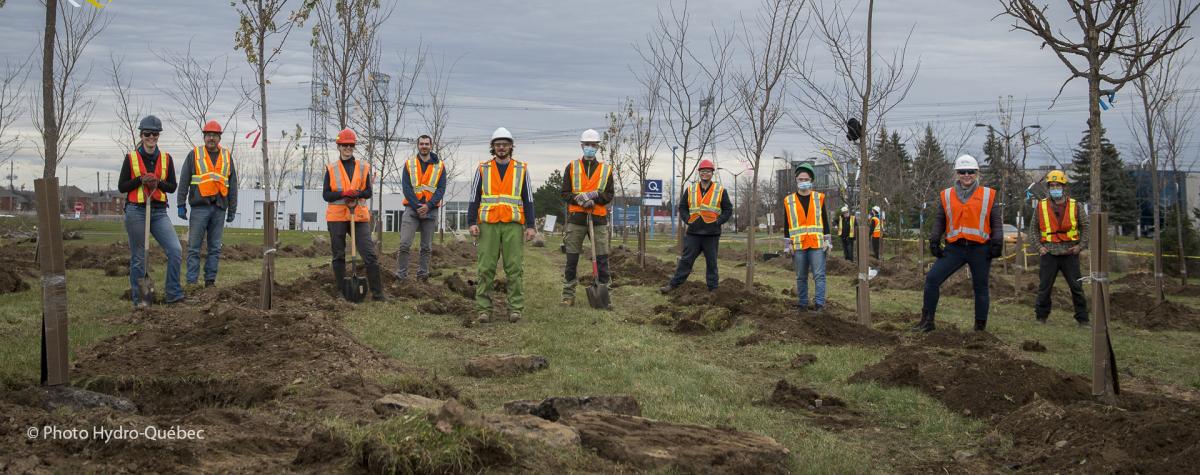
Christian Messier and his team planting trees for a research project on different approaches to early controls of plantation architecture under a power distribution network.
From left to right: Kim Bannon (research assistant), Christian Messier, Fanny Maure (research assistant), Julien Leclerc (master's student), Bastien Lecigne (postdoctoral researcher), Daniel Schönig (doctoral student), Raouf Moncef (master's student), Rita Silva (postdoctoral researcher), Isabelle Saint-Jean (Hydro-Québec) and Matt Follett (doctoral student)
CREDIT: ISFORT
Christian Messier is scientific director at the Institute of Temperate Forest Sciences (ISFORT) and professor of forest management and biodiversity at Université du Québec en Outaouais (UQO) and at Université du Québec à Montréal (UQAM), member of the Centre of Forest Research, Canada Research Chair in Forest Resilience to Global Changes and NSERC-Hydro-Québec Industrial Research Chair on Control of Tree Growth.








